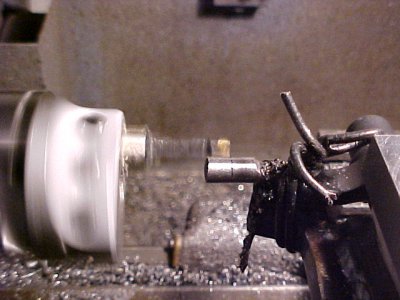Some confusion may come from the industry habit of referring to automotive engine cylinder and portable boring rigs as "boring bars".
Most common use of a boring head with integral adjustment via a screw and dovetails is in a milling machine where the work is stationary. Can be used in a lathe, as Bob showed, where again, the work is not rotated.
More often, the term "boring bar" refers to a single bar of round construction that holds either a carbide insert or a square hss tool. Many have a flat to align the axial position. The insert is mounted on the business end in a manner to present the cutting edge to the work. Most have the ability to face the bottom of the bore, so the insert is presented with a 5 deg typical front relief angle. Of course, this means that the bar needs to be aligned parallel with the lathe bed ways. It's not as critical as needing to be indicated dead on, but should be close. Most of the time I eyeball along the bar and the rear way from above. I have seen people run the tailstock ram out and sort of pin the bar against it, forcing the bar to be parallel to it. This is far more important, critical in fact, for threading bars. That is another thread in it's own right.
Setting the height is a little trickier. You could run the cross slide to the back side of a piece of bar stock and use the old 6" scale trick. You could use a dead or live center as a pointer of center to visually compare to. You could use a pair of calipers or a depth micrometer to measure from a known diameter down to the edge of the insert.
Leave no more bar outside the holder than required to reach the depth of the bore you are working. Use the largest bar you can get into the hole. Set the bar above center. Below will drag on the heel. Above also compensates for flex as the bar is pulled down by cutting forces.
Above all, get a devibe bar!!



![boring_head[7].jpg boring_head[7].jpg](https://www.hobby-machinist.com/data/attachments/1/1376-c4ebf63ff673d800a495ef840466b128.jpg)